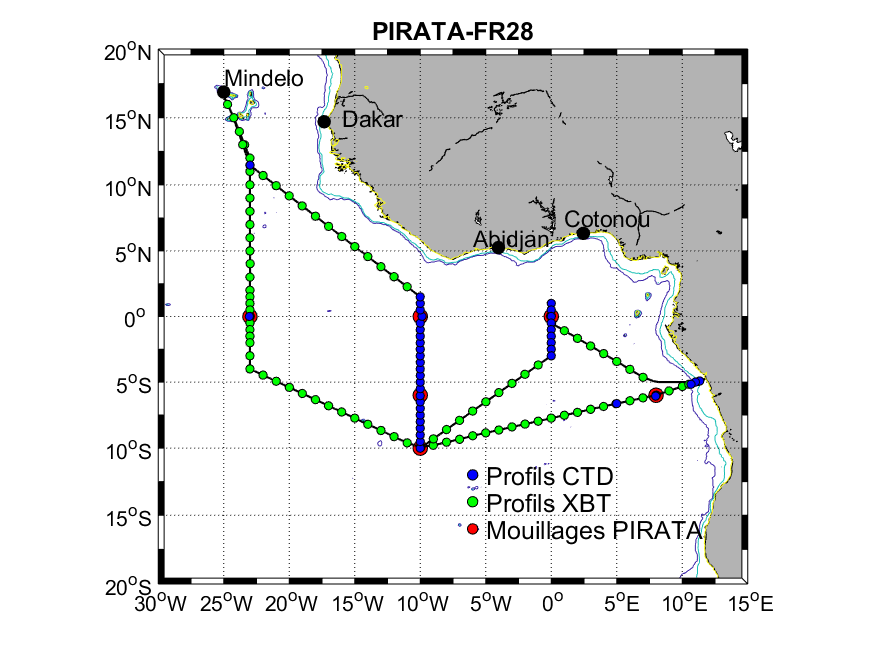Copyright : Laboratoire LEMAR- 2018
For 20 years, the PIRATA observation network has been monitoring the tropical Atlantic. Its 18 buoys provide irreplaceable data to feed weather forecasting models and to study the ocean and climate. It also helps to understand how CO2 is absorbed by the ocean.
Anchored to the ocean floor, PIRATA buoys are equipped with sensors. They measure and transmit in real time many marine and atmospheric parameters, such as water temperature and salinity at different depths, wind strength and direction, precipitation, sunlight or atmospheric pressure.
This network links research organizations in the USA, Brazil and France, which maintain 4, 8 and 6 buoys respectively, anchored between the American and African coasts. These operations take place annually, during oceanographic campaigns conducted by each of the partner countries and during which numerous measurement operations are also carried out.
In this program, LEMAR’s contribution was to initiate, with the program manager, the acquisition of acoustic data during the annual campaigns. Thus since 2015, when the campaign began to be carried out on board the N/O THALASSA, equipped with calibrated scientific probes, a biological dimension has been added to the protocol, making it possible to establish a time series of densities of essentially micronectonic organisms and their horizontal and vertical distributions, which can be studied with regard to the physico-chemical parameters acquired during the campaigns.
Partner project: PIRATA (PI Bernard Bourlès, IRD/IMAGO)
.avia-image-container.av-av_image-d307dc094f6bf2f8c9847cc4127cba25 img.avia_image{ box-shadow:none; } .avia-image-container.av-av_image-d307dc094f6bf2f8c9847cc4127cba25 .av-image-caption-overlay-center{ color:#ffffff; }






